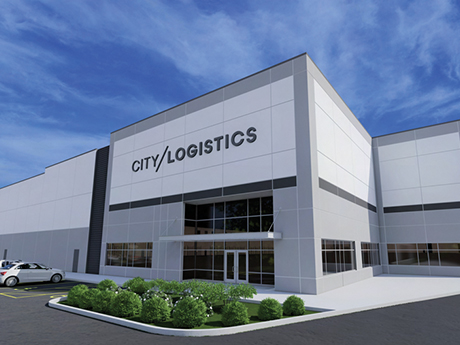National headlines report Amazon, arguably the largest warehouse user in the country, curtailing demand and, in some cases returning space back to landlords. This is sandwiched by stories detailing rising interest rates and land prices, stricter entitlement guidelines and NIMBYs working to apply the brakes on new developments.
But, in “The Land of Pleasant Living,” (a Baltimore nickname made popular by the smart advertising of a local beer), the industrial revolution continues. And, for good reason.

More than 2.3 million square feet of industrial/warehouse space was leased in the greater Baltimore metropolitan region in fourth-quarter 2022, with a net absorption of more than 1.2 million square feet of space, contributing to an overall vacancy rate of 4.5 percent. Additionally, more than 13 million square feet of space is currently under construction and rents have soared more than 50 percent over the past two years, with an average rent of just under $8 per square foot in late 2022.
Significant leases signed in fourth-quarter 2022 included Baltimore International Warehousing & Transportation’s 244,304-square-foot lease at 5250-5330 Holabird Ave.; Amazon’s 241,962-square-foot lease at 1713 E. Patapsco Ave. and the 168,655-square-foot lease executed by Transdev at 1610 Wicomico St.
Baltimore is contained within the Maryland-Virginia-Washington, D.C.-West Virginia region that contains approximately 560 million square feet of space, ranking the seventh-largest in the country. Nearly 5,000 transactions were executed between 2020 and 2022 and 70 percent were under 15,000 square feet of space, which demonstrates a robust market.
On the sales side, Prologis acquired nearly 2.5 million square feet of space in metro Baltimore from its acquisition of Duke Realty for approximately $230 million; Capital Electric purchased nearly 365,000 square feet of space from Trammell Crow Co. for $76 million; and NorthBridge Realty Holdings acquired approximately 160,000 square feet of space from The Colad Group for $21.2 million. Over the past 12 months, nearly 4.6 million square feet of space was absorbed in Baltimore City and Baltimore County.
MRP Industrial’s transformation of the former Seton Keough High School into City Logistics, a two-building, 300,000-square-foot industrial park, is a crown jewel example of urban redevelopment within the Baltimore City limits. The state-of-the-art, LEED Silver-certified buildings are absolutely stunning with its modern lines and English garden-looking and submerged gravel wetland storm water management system.
The lease rate on Building 1 attracted a strong end user and activity has been robust on Building 2 as well. This project is proof that Baltimore City industrial is no longer an afterthought to the Baltimore-Washington Corridor and can now be considered a truly viable option in areas with close proximity to I-95.
With the legalization of recreational marijuana set to become law this summer, it is possible for another high-demand use to compete for an already diminishing supply of warehouse/industrial space in the greater Maryland region. Identifying potential sites to accommodate the use might prove difficult, based on the scarcity of available space in the local marketplace, coupled with overcoming resistance from corporate neighbors and the community. The best solution may be the retrofit of Class B and C buildings, because cannabis growers typically don’t need high ceilings and large truck courts.
Competition for industrial outdoor storage (IOS) has heated up in Baltimore as this asset class has emerged as a valuable piece of the logistics supply chain, with end users utilizing the space to sort through containers that arrive on overseas vessels. Cars, trucks and construction vehicles are commonly placed on the lots in a “layover” situation, while awaiting their next transport to a final destination.
The Port of Baltimore is considered the No. 1 “roro” (roll on/roll off) destination in the country due to its closer proximity than other East Coast ports to the Midwest, highway connections and heavy rail component.
Every fundamental remains in place to ensure the continuation of the positive momentum in the warehouse/industrial asset class. Nearly 10 million people reside within the Baltimore-Washington, D.C. MSA, several major seaports are within close proximity, and approximately one-third of all consumers residing in the United States can be accessed within a one-day truck drive.
So, if you own investments in commercial real estate in “The Land of Pleasant Living,” grab your favorite beer and enjoy the continued prosperous environment. We expect another good year in 2023.
— By Kate Jordan, SIOR, Principal, Lee & Associates | Maryland. Jordan currently serves as the President-Elect of NAIOP Maryland as well. This article was originally published in the April 2023 issue of Southeast Real Estate Business.


